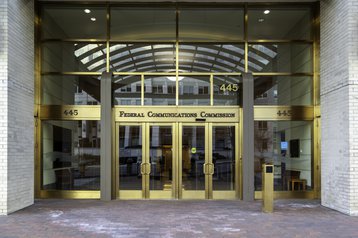China is reportedly blocking projects to lay and maintain subsea Internet cables through the South China Sea, with the Financial Times reporting that Beijing is keen to command more control over the infrastructure transmitting the world's data.
It comes as stricter permit requirements from Beijing have forced companies to design routes that avoid the South China Sea, notes the FT, citing multiple industry sources.
China's stance on the situation has likely been fueled by some of its tensions with the US over the years, with two of China's biggest mobile operators recently withdrawing their involvement in the South East Asia-Middle East-West Europe 6 (SeaMeWe-6) submarine cable project.
The country's tougher stance on permits to operate outside its internationally recognized international waters has reportedly delayed the SJC2 cable.
This cable is set to connect Japan to Singapore, plus Taiwan and Hong Kong, but has been delayed by more than a year due to Chinese objections and lengthy permit issues, according to two industry executives, says the FT.
China held up the project for several months in its territorial waters of Hong Kong, citing concerns that the contractor might install spying equipment. The consortium seeking approval for the cable includes China Mobile, Chunghwa Telecom, and Meta.
"China is attempting to exert more control over undersea activities in its region, in part to prevent US surveillance systems from being installed as part of undersea cable deployment,” Bryan Clark, a former US submarine officer, and senior Navy official told the FT.
The situation is tricky as the South China Sea is one of the most popular subsea cable routes in the world, connecting large parts of Asia, as well as onwards onto Africa.
Beijing's hold over the subsea cable projects in the industry is strengthened further, with the country claiming its entirety through the 'nine-dash line' in the South China Sea, though this has been historically disputed by neighboring countries.
It's an issue that extends far beyond subsea cables and includes fishing, exploration of oil, and shipping routes.
International Law dictates that states or companies looking to lay Internet cables require government permits for access to the seabed within 12 nautical miles of a country’s territory, however, such permission is not usually necessary in water between 12 nautical miles and 200 nautical miles from land.
Are tensions with the US to blame?
As previously mentioned, geopolitical tensions between China and the US have potentially led to the nation's tough stance on subsea cables.
In 2021, a subsea cable set to connect the Pacific Island nations was scrapped after the US government warned that Chinese companies pose a security threat.
At the time, the World Bank-led project declined to award a contract for the East Micronesia Cable rather than let it go to Chinese cable company HMN (Huawei Marine Networks) Technologies.
Meanwhile, Facebook (now Meta) pulled out from the HKA project to build a submarine cable between California, Hong Kong, and Taiwan, as the US technology company felt pressure from the US.
In 2020, the White House set up 'Team Telecom' to evaluate foreign participation in US telecom networks. In June 2020, the team recommended that the FCC deny the 11,800km Pacific Light Cable Network cable extension to Hong Kong, the first direct US-Hong Kong cable.
Then in 2021, the Department of Justice group recommended approving a Google and Meta/Facebook cable between the US and Asia, but without links to Hong Kong, which has increasingly seen its autonomy come under Chinese influence in recent years.
Another point of concern was that, when the cable was first announced in 2016, the largest backer of the cable was Chinese-based Pacific Light Data Communications Co.
After some discussions, Google and Meta agreed that the PLDC will have restricted access to the infrastructure and information, and leave the Hong Kong section of the cable unused.


